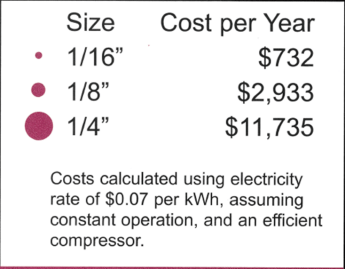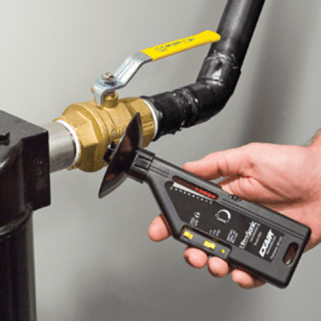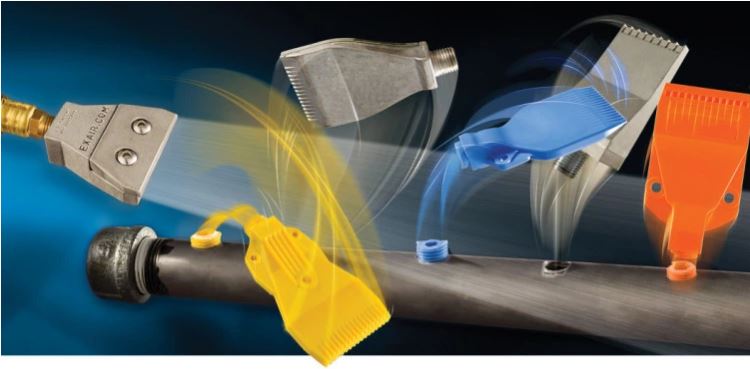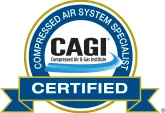The electrical costs associated with generating compressed air make it the most expensive utility in any industrial facility. In order to help offset these costs, it’s imperative that the system is operating as efficiently as possible. I’d like to take a moment to walk you through some of the ways that you can work towards making your compressed air system more efficient.
The first step you should take is to identify and fix any leaks within the distribution piping. According to the Compressed Air Challenge, up to 30% of all compressed air generated is lost through leaks. This ends up accounting for nearly 10% of your overall energy costs!! To put leaks in perspective, take a look at the graphic below from the Best Practices for Compressed Air Systems handbook.

Compressed air leaks don’t just waste energy, but they can also contribute to other operating losses. If enough air is lost through leaks, this can also cause a drop in system pressure. This can affect the functionality of other compressed air operated equipment and processes. This pressure drop can affect the efficiency of the equipment causing it to cycle on/off more frequently or to not work properly. This can lead to anything from rejected products to increased running time. With an increase in running time, there’s also the need for more frequent maintenance and unscheduled downtime.
You can perform a compressed air audit in your facility using an EXAIR Model 9061 Ultrasonic Leak Detector. If you’d prefer someone come in and do this for you, there are several companies that offer energy audit services where this will be a focal point of the process.

Speaking of maintenance, proper compressor maintenance is also critical to the overall efficiency of the system. Like all industrial equipment, a proper maintenance schedule is required in order to ensure things are operating at peak efficiency. Inadequate compressor maintenance can have a significant impact on energy consumption via lower compressor efficiency. A regular preventative maintenance schedule is required in order to keep things in good shape. The compressor, heat exchanger surfaces, lubricant, lubricant filter, air inlet filter, and dryer all need to be maintained. This can be done yourself or through a reputable compressor dealer. The costs associated with these services are outweighed in the improved reliability and performance of the compressor. A well-maintained system will not cause unexpected shutdowns and will also cost less to operate.

The manner in which you use your compressed air at the point of use should also be evaluated. Inefficient, homemade solutions are thought to be a cheap and quick solution. Unfortunately, the costs to supply these inefficient solutions with compressed air can quickly outweigh the costs of an engineered solution. An engineered compressed air nozzle such as EXAIR’s line of Super Air Nozzles are designed to utilize the coanda effect. Free, ambient air from the environment is entrained into the airflow along with the supplied compressed air. This maximizes the force and flow of the nozzle while keeping compressed air usage to a minimum.
Another method of making your compressed air system more efficient is actually quite simple: regulating the supply pressure. By installing pressure regulators at the point of use for each of your various point of use devices, you can reduce the consumption simply by reducing the pressure. This can’t be done for everything, but I’d be willing to bet that several tasks could be accomplished with the same level of efficiency at a reduced pressure. Most shop air runs at around 80-90 psig, but for general blowoff applications you can often get by operating at a lower pressure. Another simple, but often overlooked, method is to simply shut off the compressed air supply when not in use. If you haven’t yet performed an audit to identify compressed air leaks this is even more of a no-brainer. When operators go to lunch or during breaks, what’s stopping you from just simply turning a valve to shut off the supply of air? It seems simple and minute, but each step goes a long way towards reducing your overall air consumption and ultimately your energy costs.
Tyler Daniel, CCASS

Application Engineer
E-mail: TylerDaniel@exair.com
Twitter: @EXAIR_TD
Image taken from the Best Practices for Compressed Air Systems Handbook, 2nd Edition